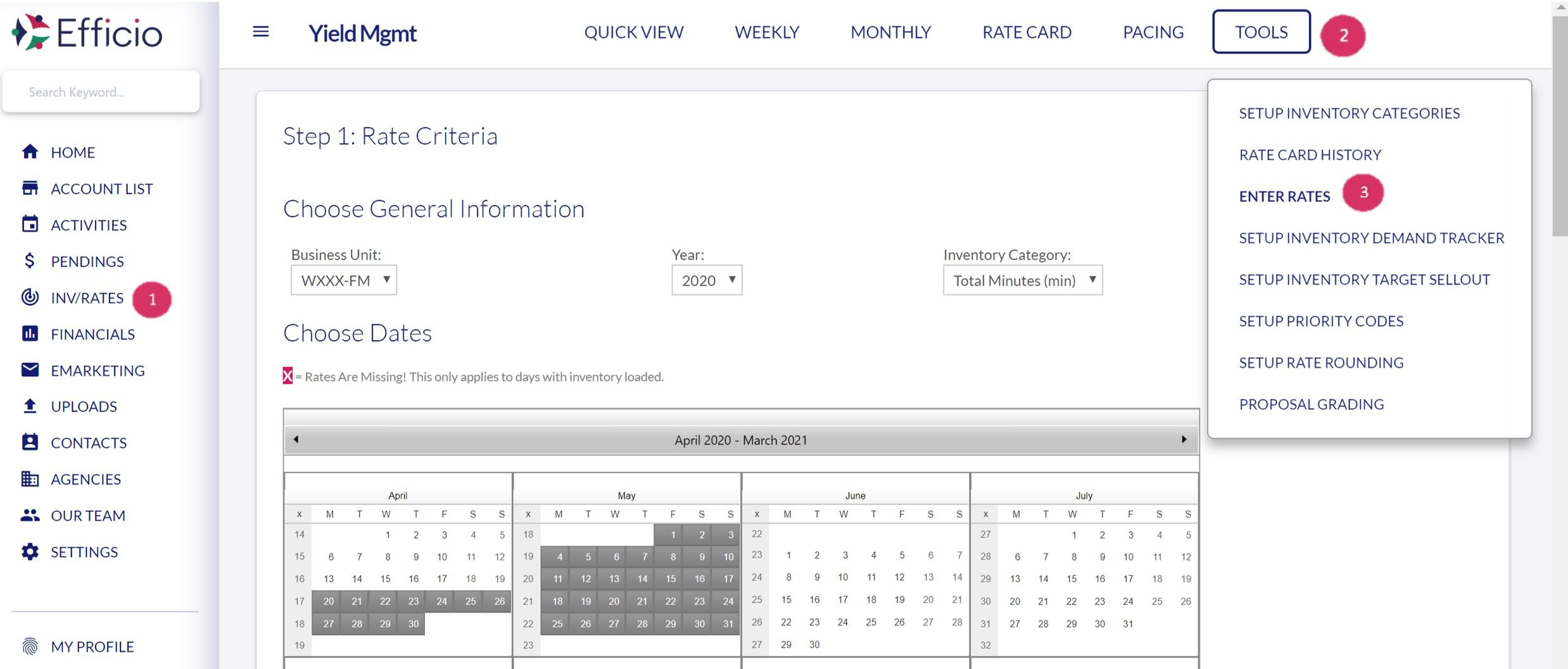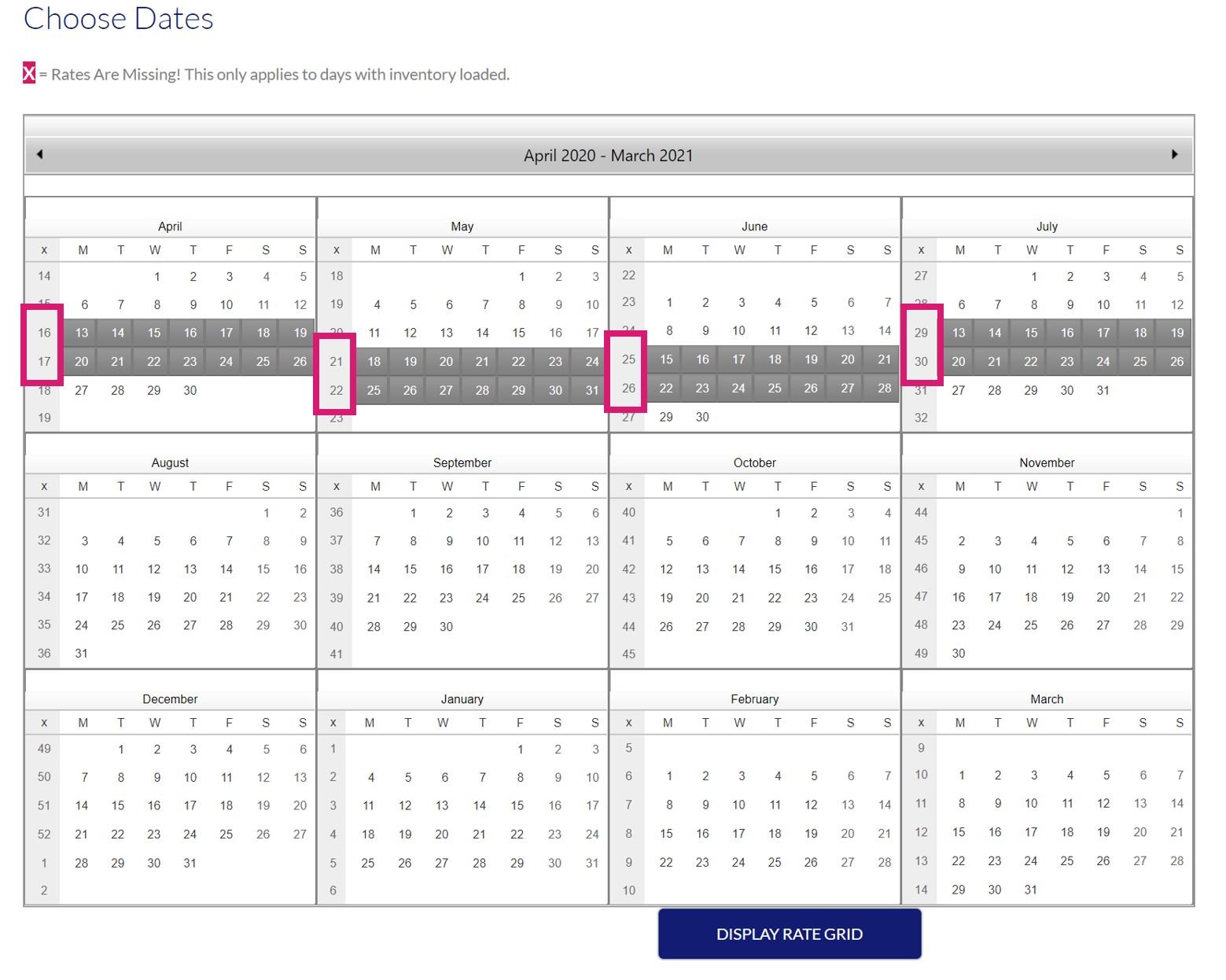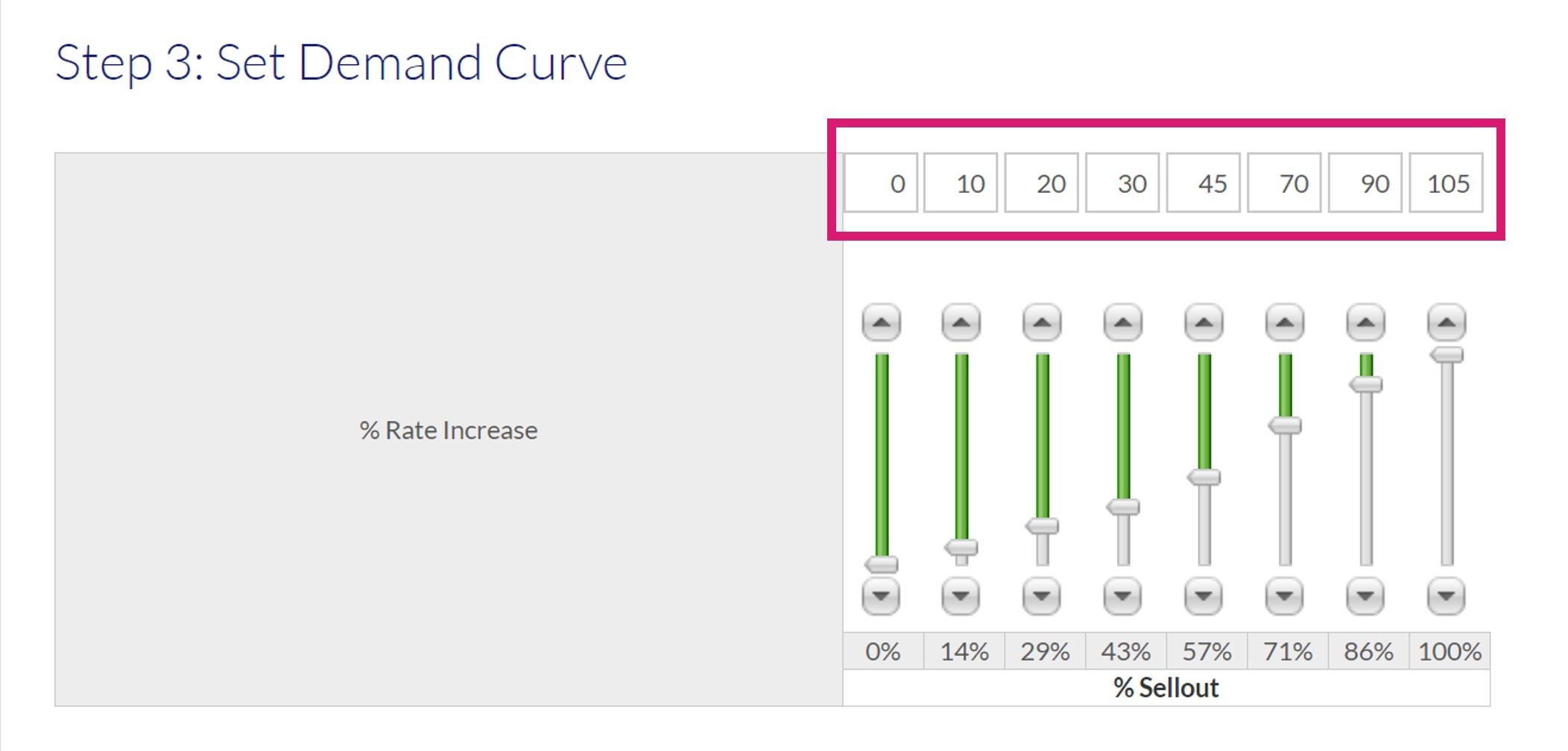Setting rates by week using demand curves.
In each market, demand can vary from week to week. Some weeks it just seems like everyone wants to be on the air and some weeks we just can’t seem to drum up enough business to fill our inventory.
Understanding the natural ebbs and flows of your business and pricing accordingly can save you inventory headaches as well as make you more money. We’ve found that stations have the most success when they tier rates from week to week. We are going to demonstrate how to use the yield management software in ShareBuilder CRM to react to proactively set rates that match your demand.
- First, let’s increase pricing during auto weeks in the third and fourth quarters by visiting the Enter Rates page.

- Next, select the weeks where, in this market, where there will be the strongest demand between April and July. Do this by clicking on the number in front of each week that you want to select for this group. When finished selecting weeks, click the Display Rate Grid button.

- The Demand Curve will increase your rate from your minimum to your maximum by the given percentage that’s changeable. The way this works is that when your sellout percentage in a time period hits a level listed at the bottom of the demand curve, the rate will move between the minimum towards the maximum by the percentage at the top. If your minimum rate is $50 and maximum rate is $100 and the sellout % from 6-10a is 60%, the rate will be $80. $100-$50=$50.60% of $50 is $30.$30+$50=$80. The generated rate will be $80.

- What we want to accomplish is to set a higher maximum on our weeks with strong demand or our ‘auto weeks’, but we can also adjust how quickly we begin to increase the rate by adjusting the slides to react quickly to high sellouts. On the other hand, if we know we will have spoilage (wasted inventory), raising our bottoms does not help us. During our low demand weeks, we want to adjust the demand curve so that rates stay constant up to a certain sellout percentage and we don't increase our rate floors when demand doesn't support it.
- Let's now turn our attention to our minimum and maximum rates for the selected week. A best practice is to increase your maximum rate during high-demand weeks. This will make every 'step up' pricing increase larger and create faster reactions to higher demand. Simply adjust the Max Rate up from its current level keeping in mind that because the percentage increases on our demand curve, a $50 Max Rate increase will not translate to a $50 rate card increase unless we are already at 100% sellout.
- Now that we know how to help drive rate during our high demands weeks, how to help to stimulate demand during low-demand weeks. Keep in mind, when we lower our floor, it is very important that you lower the rate ONLY to customers that are willing to buy more units and spend more with us. For example, if a client is willing to buy 5 units per week at $100 but willing to buy 7 units per week at $80 then we will take this deal. We are willing to be more flexible these weeks because we know we will not have enough demand to fill up our inventory unless we work to create it.
- During these weeks, we can either lower our Max Rate to keep prices lower, and longer, or we can adjust the % Rate Increase of our Demand Curve that we discussed earlier. Here's an example of the demand curve adjusted so that rates only increase very slowly until there's more pressure on a week.

-1.png?height=120&name=ShareBuilders%20Logo%20(07052023)-1.png)